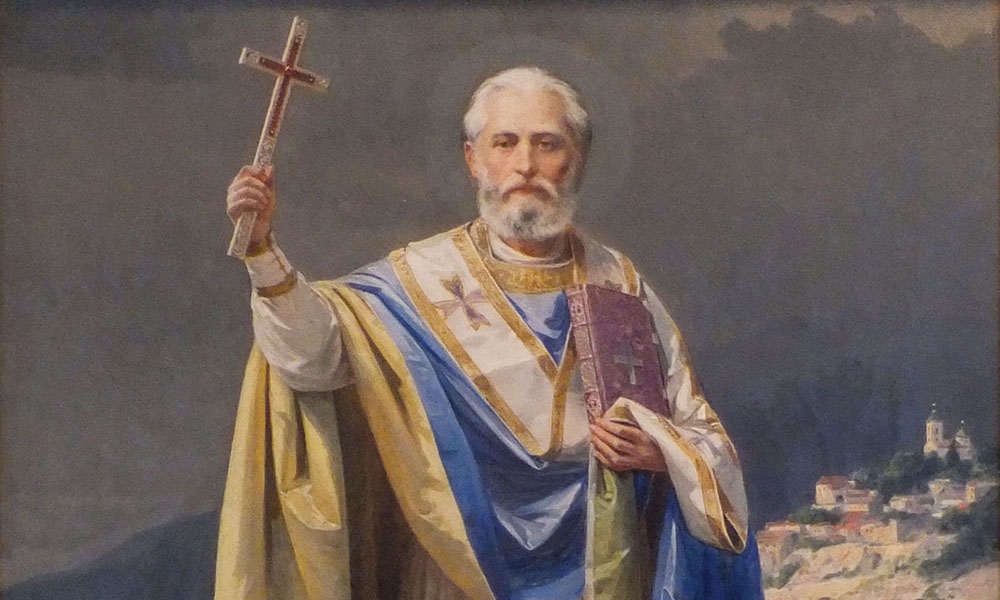
A Visit from St. Nicholas
St. Nicholas was born in the third century in Patara, part of modern-day Turkey. His life is shrouded in legend, but one common thread throughout these tales is his reputation for generosity and compassion.
St. Nicholas was born in the third century in Patara, part of modern-day Turkey. His life is shrouded in legend, but one common thread throughout these tales is his reputation for generosity and compassion.
Nicholas was born into a wealthy Christian family, and after the death of his parents, he inherited a considerable fortune. Guided by his faith, he devoted his life to helping needy people. One of the most famous stories recounts how he aided a poor man with three daughters facing destitution. In the dead of night, Nicholas secretly dropped bags of gold coins through the man’s window, providing dowries for each daughter and saving them from a life of hardship. The bags of gold landed in the stockings/shoes of the family members who had placed them near the fireplace to warm.
Because of this story, children began placing their stockings and shoes near their fireplaces, hoping that St. Nicholas would leave them a gift. Sound familiar?
This act of kindness exemplifies St. Nicholas’s dedication to helping those facing hardship and injustice. His generosity, often performed secretly to preserve the dignity of those receiving assistance, became a hallmark of his saintly reputation.
Nicholas’ generosity ex-tended beyond his legendary gift-giving. He was known for helping the sick, rescuing sailors from storms at sea and intervening to protect the innocent. His selfless deeds earned him a reputation as a patron saint of children, sailors, and those in need.
Nicholas became the subject of widespread veneration after his death at age 75 on Dec. 6, around 343 AD. Over the centuries, the stories of his benevolence spread, and celebrations in his honor became an integral part of Christian traditions, especially in Europe.
The transformation of St. Nicholas into the modern-day Santa Claus can be traced to various cultural influences. In the Netherlands, Sinterklaas, a figure based on St. Nicholas, became associated with gift-giving during the celebration of St. Nicholas’ Dec. 6 feast day. Dutch settlers brought this tradition to America, where Sinterklaas evolved into the figure we now know as Santa Claus.
In the 19th century, the American image of Santa Claus underwent further transformation, influenced by the poem “A Visit from St. Nicholas” (commonly known as “The Night Before Christmas”) and the illustrations of Thomas Nast. Santa Claus became associated with the North Pole, a sleigh pulled by reindeer, and the custom of delivering gifts on Christmas Eve.
While the modern Santa Claus has taken on a more secular and commercialized identity, the spirit of generosity and compassion associated with St. Nicholas remains a central theme during the Christmas season. The story of the historical St. Nicholas serves as a reminder of the joy that comes from selfless giving and the power of kindness to make a lasting impact.



